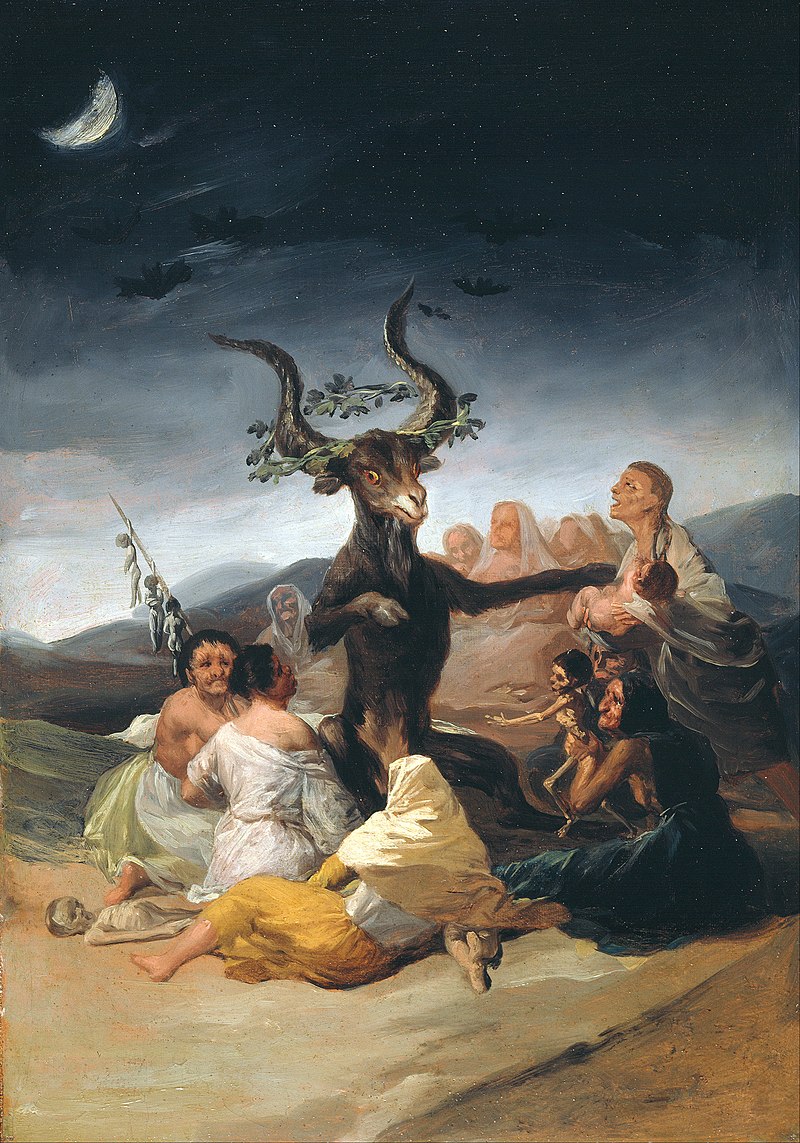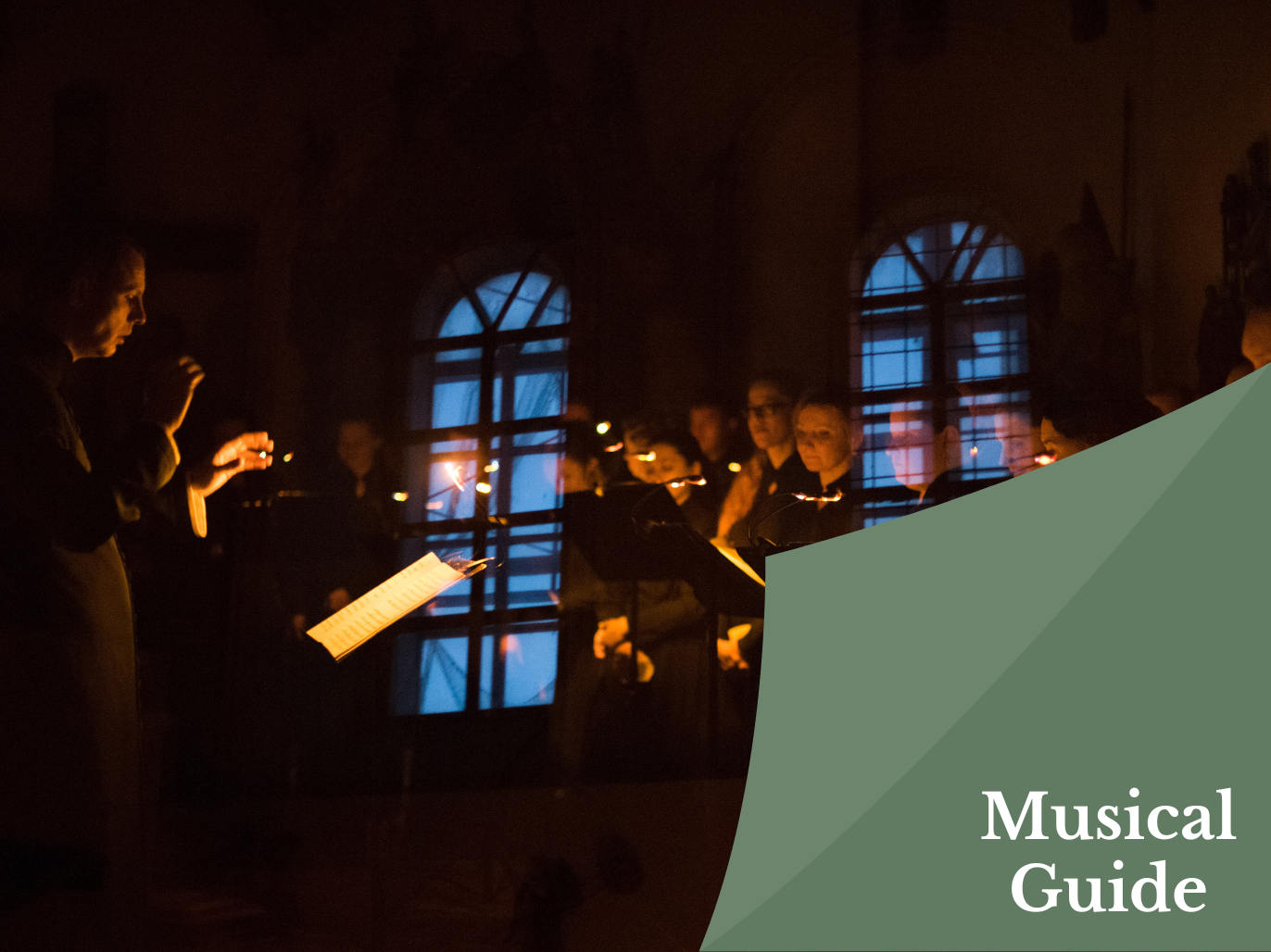Nearly eight centuries after its composition for the Latin funeral mass, the medieval Dies irae theme continues to unsettle and terrify. Since the early 1800s, classical composers such as Berlioz, Mahler, and Rachmaninoff have turned to this sinister tune to evoke death and the supernatural. Romantic and modern composers alike have used this memorable Gregorian melody to probe our enduring fascination with death and things that go bump in the night.
View author's page
Reading time estimated : 14 min
What is the Dies irae?
The Dies irae is a chant sung during the Latin Mass for the Dead (Requiem). Both the text and melody were likely composed by friars during the thirteenth century. Though the original poem contains eighteen stanzas, the first remains the most popular; translated, it reads, “The day of wrath, that day, will dissolve the world in ashes: this is the testimony of David along with the Sibyl.”
Many Requiem Mass settings have used the Dies irae text without the original melody. Mozart and Verdi set this fiery poem to their own music. Some composers, including Duruflé and Fauré, omitted the more wrathful portions from their Mass settings; the effect is one of reflective devotion rather than dread. Other Requiems, such as the German Requiem by Brahms, omit the text entirely.
The enduring power of the original plainchant lies in its simplicity. Written in a narrow range (less than an octave), the melody moves in stepwise motion in a gloomy minor mode. Many composers quote only the first four or eight notes of the sequence, sonically distilling it. By creating a straightforward, easily sung (and easily remembered) tune, its composer assured that this melody would haunt all who hear it.
From Mass to the Masses
This music saw a massive surge in popularity with the rise of the Romantic movement (more than half of the works listed below are from the nineteenth century). Artists, responding to what they viewed as the limitations of the overly rational Enlightenment, turned to the supernatural and the ancient. The Medieval period held a particular fascination for Romantic artists. To them, the Middle Ages represented an era of chivalry and an organic relationship to the natural world, as opposed to the alienation and environmental destruction brought about by the Industrial Revolution.
Hector Berlioz, Symphonie Fantastique, “Dream of a Witches’ Sabbath”
Credit for popularizing the Dies irae in the concert hall goes to French Romantic composer Hector Berlioz. He was a twenty-six-year-old student at the Paris Conservatoire when his evocative Symphonie Fantastique premiered in 1830 (a young Franz Liszt was in attendance). Beethoven’s programmatic Pastoral Symphony served as a model for this quasi-autobiographical symphony (like the Pastoral, it has five movements). But while Beethoven was inspired by the natural world, Berlioz was inspired by his obsession with Irish actress Harriet Smithson. After hearing the work, she eventually fell in love and the two wed, though it was an unhappy marriage.
The Symphonie’s plot concerns an imaginative artist overwhelmed by obsession. In a moment of self-pity he attempts to poison himself with opium, but instead imagines that he has killed the woman he’s in love with. In his dream, he marches to the scaffold and sees himself beheaded. The final movement finds him at a witches’ sabbath, surrounded by monsters and sorcerers. Bassoons and tubas introduce a “burlesque parody” of the Dies irae that’s then taken up by the trombones and horns.

Franz Liszt, Totentanz: Paraphrase on Dies irae
Tragic events in Liszt’s youth instilled a lifelong preoccupation with death. When Franz was fifteen his father died of typhoid fever, and the boy grew so ill that a Paris newspaper printed his obituary. Only a few years later, he survived the cholera epidemic that killed 20,000 people in Paris alone. Throughout his life Liszt composed many works related to the Faust legend, a symphony based on Dante’s Divine Comedy, numerous elegies, and this Totentanz (Dance of Death). Liszt incorporated medieval-sounding passages to accompany the Dies irae melody, which he introduces in the very first bars alongside the “diabolus in musica”: the dissonant interval of the tritone.
Camille Saint-Saëns, Danse macabre

Inspired by the symphonic poems of Liszt, Saint-Saëns composed several of his own in the 1870s. The most famous of these, Danse macabre, began as a song for voice and piano. In the medieval danse macabre, the dead, or a personification of Death (often a skeleton), call people from all walks of life to dance to the graveyard. No one, from paupers to princes, could escape this summons. Saint-Saëns opens the work with a violin playing a tritone. The Dies irae appears in a major key instead of the usual minor, an effect contemporary audiences found unsettling. A xylophone depicts the rattling of skeleton bones, an effect Saint-Saëns would later use in the “Fossils” section of Carnival of the Animals. In the coda, an oboe mimics the crow of the rooster; its morning call sends the skeletons back to their graves.
Sergei Rachmaninoff, Symphonic Dances
Rachmaninoff, like Liszt, had a preoccupation with death brought about by childhood tragedy. Both his older sisters succumbed to illness as teenagers, and Rachmaninoff profoundly felt their loss. Depression plagued him throughout his life, including a famous spell of melancholy following the disastrous premiere of his First Symphony. “It is impossible to live while one knows one must die after all,” he wrote to a friend. “How can you bear the thought of dying?”
From his teenage First Piano Concerto to his last major work, the Symphonic Dances, the Dies irae appears in more than a third of Rachmaninoff’s forty-five compositions. His fixation was so intense that it has been the subject of psychiatric speculation. The Symphonic Dances quote some of his earlier pieces, including the First Symphony. The final dance presents a battle between the Dies irae theme, representing Death, and a quotation from his a cappella All-Night Vigil, representing Resurrection (the lyrics of this movement narrate the discovery of Christ’s empty tomb).
Charles Gounod, Faust, Act IV
In Goethe’s tragic play Faust, the doomed young Gretchen (short for Margarete) seeks refuge in a cathedral after her lover, Faust, kills her brother in a duel. There she is accosted by an evil spirit as the cathedral choir sings strains of the Dies irae. Gounod kept this scene in his adaptation of the play, the finest operatic retelling of the Faust legend. The scene opens with fiendishly slinking chromatic lines and a relentless, driving march that makes Marguerite’s downfall seem inevitable. A church organist for many years, Gounod incorporates a wandering solo for the instrument. When the chorus concludes, the demon Méphistophélès calls out that for Marguerite, a lost soul, only Hell awaits.
Eugène Ysaÿe, Sonata for Solo Violin, Op. 27, No. 2 “Jacques Thibaud”
An outstanding violinist nicknamed “King of the Violin,” Belgian Eugène Ysaÿe was also an accomplished conductor and composer. Inspired by a performance of Bach’s six sonatas and partitas for unaccompanied violin (the first movement of this sonata begins with the opening of Bach’s Prelude from the E-major Partita), Ysaÿe composed his own set. Each is dedicated to a younger colleague. The first notes of the Dies irae appear in every movement of the “Jacques Thibaud” sonata. According to Ysaÿe’s son, in the third movement “the souls of the dead arise and dance a nocturnal sarabande.”
Verdi, “Dies irae” from Messa da Requiem
Though Verdi didn’t include the original melody in his Requiem, his version is so epic that we had to include it! When the work premiered in 1874, critics accused it of being too dramatic for the somber occasion of a funeral mass; conductor Hans von Bülow dismissed it as an “opera in clerical dress” (in his defense, one of the work’s first performances was given at La Scala, Italy’s grandest opera house). The Dies irae movement may be the most dramatic of all. Verdi fully embraces the text’s themes of wrath and destruction with a flurry of dramatic musical gestures including thundering chords and bass drum, trembling strings, dizzying trumpet figures, and a wailing chorus.
Gustav Holst, The Planets, “Saturn: The Bringer of Old Age”
Holst’s most famous work, the seven-movement suite The Planets, premiered in September 1918 in the last weeks of the First World War. Inspired by astrology, each movement depicts an extraterrestrial planet (sorry, Pluto). The fifth movement, “Saturn: The Bringer of Old Age” (Holst’s favorite of the set), abounds with gestures alluding to death. At the beginning of the movement, flutes, bassoons, and harps intone a theme suggesting a slowly ticking clock. A descending four-note figure first heard in the low strings evokes the lament bass, a Baroque device denoting sorrow. The Dies irae also makes an appearance, alluding to the final stop on the relentless march of time.
Gustav Mahler, Symphony No. 2, Resurrection Symphony
Premiered in 1895, Mahler’s monumental Second Symphony (Resurrection) was one of his most successful works during his lifetime; it remains a fixture in concert halls despite its large orchestration and demands for an organ, vocal soloists, and full chorus. Rather than promoting fear of death, the five-movement symphony celebrates the afterlife. Mahler presents the Dies irae in the outer movements. In the finale, it is vanquished by a transcendent resurrection theme accompanied by the pealing of church bells. Of this last movement, Mahler wrote, “The increasing tension, working up to the final climax, is so tremendous that I don’t know myself, now that it is over, how I ever came to write it.”
Cristóbal Tapia de Veer: Opening Theme of The White Lotus
Classical composers are far from the only ones taking advantage of the evocative power of the Dies irae. For nearly a century, film composers have incorporated the first eight notes of the theme into their scores. Fritz Lang’s 1927 silent science-fiction masterpiece Metropolis was one of the first movies to use it. Since then, it has appeared in films ranging from the comedic (Groundhog Day) and cartoonish (The Lion King, The Nightmare Before Christmas) to the horrific (The Shining, Poltergeist).
Recently, the tune has appeared in the opening theme to HBO’s dark comedy The White Lotus. Named for the fictional luxury hotel chain where the show is set, each season of this satirical murder mystery begins with an unidentified corpse. Composer Cristóbal Tapia de Veer created this “otherworldly” song at the request of show creator Mike White, who asked for “music that makes you feel like there’s gonna be some kind of human sacrifice at some point.”
As another Gregorian chant reminds us, “In the midst of life we are in death.” The dark specter of death forever looms near; even in moments of revelry, the promise of the grave makes its haunting presence felt.

